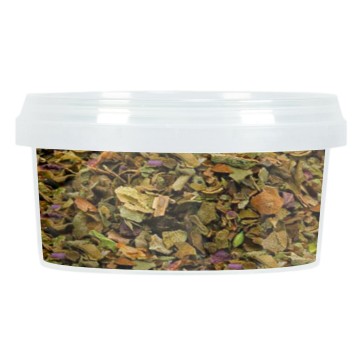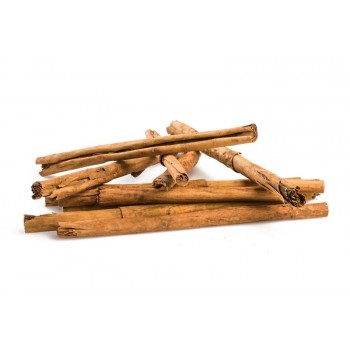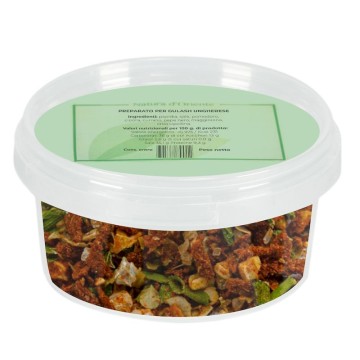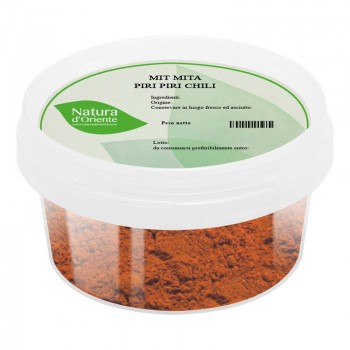Dried basil leaves: properties and benefits
Much loved in the kitchen, basil gives the unique color and scent of its leaves. Like many aromatic herbs, basil shows digestive virtues, with beneficial effects to stimulate digestive function and appetite. Furthermore, it has properties useful for draining excess liquids, against water retention and for the correct functionality of the urinary tract.
On a nutritional level, in fact, basil is rich in potassium which helps regulate the amount of fluids in the body; Furthermore, it contains other minerals and antioxidant compounds. Basil gives its purifying action in the kitchen, and is also the basis for extracting an excellent essential oil, which has a soothing effect on the gastric mucous membranes.
Use of basil in cooking: recommended combinations
The dried basil version is convenient in cooking, and allows the flavor of basil to combine with that of other ingredients, especially in sauces and as a condiment. The drying process makes the aromatic herb concentrated, which is why it is useful to reduce the dried basil by about 2/3 compared to the fresh one in recipes.
One of its most famous preparations is Genoese pesto, of which basil is also known as the basic ingredient. This sauce, typical of Ligurian cuisine, is created using basil together with pine nuts and extra virgin olive oil. Excellent condiment for pasta, canapés and focaccias. Dried basil can be used in various salad dressings, vegetables, stews, carrot, pea, broccoli and zucchini soups. It adds an explosion of flavor to the tomato, a classic of Caprese salad when paired with basil. It can be used to flavor red tomato sauces in the dried basil version. It goes well with cucumber, feta cheese and summer cold pasta salads.
Perfect on grilled fish and roast chicken, it can also be used in chicken marinades, together with balsamic vinegar and garlic. As an aromatic herb, basil garnishes meat recipes and gives an intense aroma to scrambled eggs.
It is also used to create a basil and herb flavored butter, as a tasty addition to fish, meat, vegetables, pasta, potatoes and bread. In hot dishes it is preferably used raw because it does not tolerate long cooking which attenuates its aroma. For this reason, in several recipes it is recommended to add it just before serving.
For those who love contrasts, basil can also be used on some desserts such as lemon yogurt and basil cake, and basil ice cream.
Stuffed tomatoes and mushrooms flavored with basil
Ingredients: 4 ripe tomatoes - 4 champignon mushrooms - 2 cloves of garlic - 3 onions - 2 tablespoons of chopped parsley - 1 tablespoon of dried basil - 4 tablespoons of breadcrumbs - 70 g of butter - salt and pepper to taste.
PREPARATION: Prepare the filling mixture: clean the mushrooms, wash them and cut them into thin slices. Clean the garlic and onions and chop them finely: you will need six spoonfuls for the filling. Melt 25g of butter in a pan and sauté the mushrooms until they are lightly golden. Remove them from the pan with the slotted spoon and set them aside. Add 30 g of butter to the pan, let it melt and brown the garlic, onions, parsley and basil. Add the breadcrumbs and mushrooms, mixing together with salt and pepper. Heat the oven to 200°C. Wash the tomatoes, dry them and cut the top, to empty them with a teaspoon. Place a sprinkling of salt and pepper inside. Fill the tomatoes with the filling, giving it a dome shape. Melt the remaining 15g butter over medium heat, using a small saucepan. Arrange the tomatoes in a small baking dish and sprinkle them with the melted butter. Bake and let them cook for 30 minutes, until the tomatoes are golden brown. Leave them in the cooking dish and serve them - warm as an appetizer or cold as a summer dish.
Origins and history of cultivation
The basil plant (Ocimum basilicum) is an aromatic herb native to India, Asia and Africa belonging to the Lamiaceae family. Considered a sacred and noble plant since ancient times, it takes its name from the Greek "basileus" which means "king". For the Romans, basil was considered a magical plant, sacred to Venus, to be harvested according to precise rituals. Some legends are linked to basil, come the one linked to Empress Helena, mother of Emperor Constantine (4th century AD), who spread it throughout the Empire because she had found it on the site of Christ's crucifixion.
Over time it became an essential element of Mediterranean cuisine, and in the Middle Ages basil was considered a source of miracles, health and energy. In Renaissance Italy it was an aroma appreciated in gastronomy, and since then it has entered our kitchen as an irreplaceable aroma. A condiment for many dishes, with a key role and many varieties.
Today basil grows in many places around the world, cultivated for the aromatic power of its leaves, which are rounded and often pointed, with a bright green color. There are more than 60 varieties of basil and one of the main ones is sweet basil, also called Genoese basil, with medium-sized and shiny leaves. Sweet basil is well known in the recipes of Italian and Mediterranean cuisine, together with the delicately scented Greek basil, which maintains its aroma even when dried.









 No reward points for this product.
No reward points for this product.















